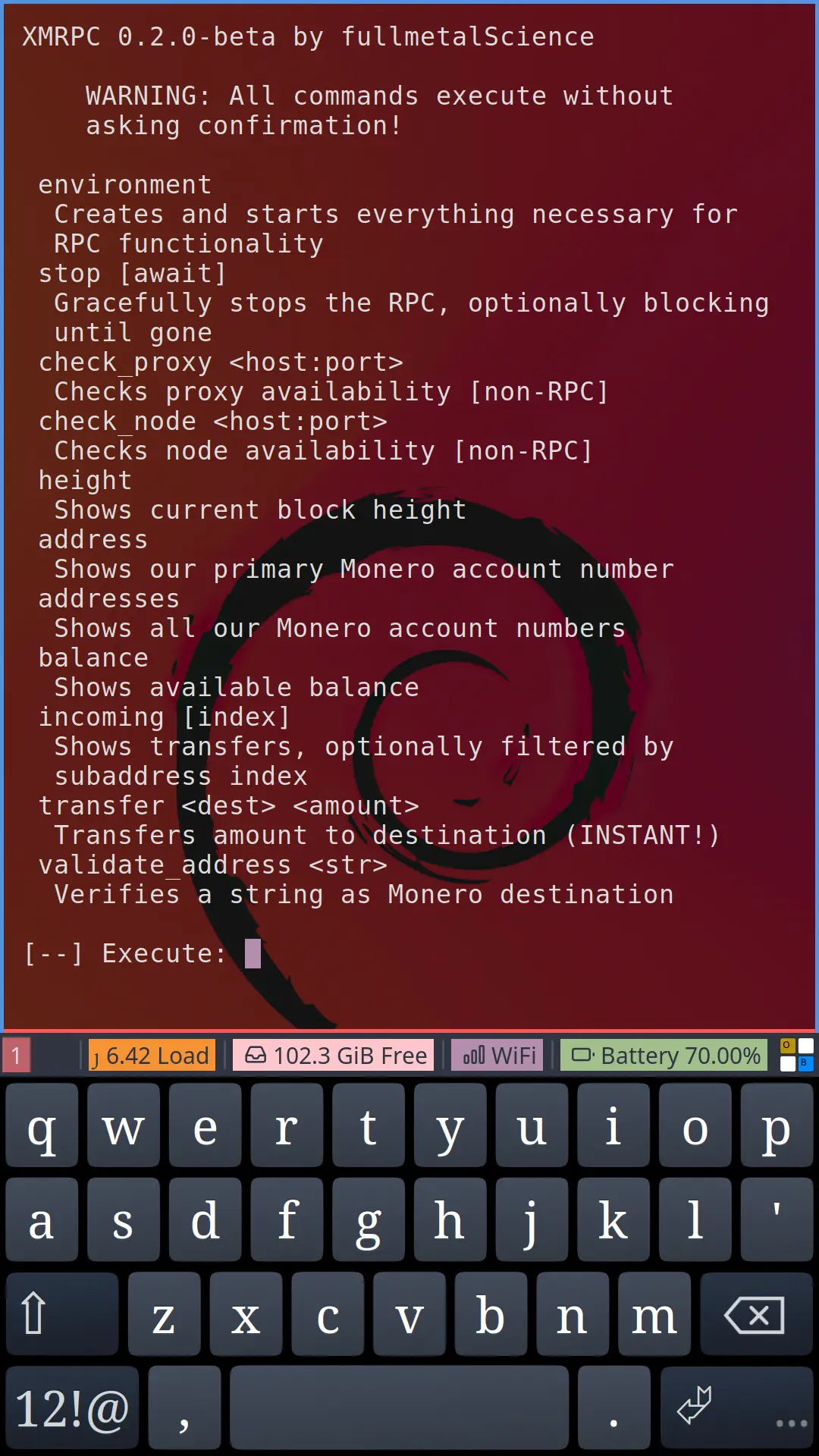For this release I made sure that the various NoShore tools can be run side-by-side on the same machine, as the same user.
This means that you can now team up ghost and gate locally to use them together with a tower-instance, local or remote.
The commands you need in order to issue a transaction can look like this:
gate dest 888tNkZrPN6JsEgekjMnABU4TBzc2Dt29EPAvkRxbANsAnjyPbb3iQ1YBRk1UXcdRsiKc9dhwMVgN5S9cQUiyoogDavup3H
gate cost 0.1776
ghost trigger
That's the boring way, though. Ever wondered how come no website ever provides you a complete string you can just copy and paste to your Monero CLI - like transfer 888tNkZrPN6JsEgekjMnABU4TBzc2Dt29EPAvkRxbANsAnjyPbb3iQ1YBRk1UXcdRsiKc9dhwMVgN5S9cQUiyoogDavup3H 0.1776?
While we keep wondering, NoShore handles this gracefully for us, allowing websites to keep doing their thing.
Let's say they prompt for payment like this: "Send 0.1776 Monero to 888tNkZrPN6JsEgekjMnABU4TBzc2Dt29EPAvkRxbANsAnjyPbb3iQ1YBRk1UXcdRsiKc9dhwMVgN5S9cQUiyoogDavup3H". Instead of plumbing together the corresponding transfer-command, simply have gate handle it:
gate scan "Send 0.1776 Monero to 888tNkZrPN6JsEgekjMnABU4TBzc2Dt29EPAvkRxbANsAnjyPbb3iQ1YBRk1UXcdRsiKc9dhwMVgN5S9cQUiyoogDavup3H"
It will discard anything useless, tell you what remained and set dest and cost accordingly.
For added serenity you can run gate help to see the parameters once again before you execute ghost trigger just as before.
And now for the geeks: QR code scanning++
(as if NoShore wasn't geeky by design :)
Run scan without parameters, use your camera and process a string like the one from the previous example directly from a QR code:
# As seen in this post's image
gate scan
Currently, this is Termux-only, but it can work just as well with your PC's camera.
Installation
To activate all of the above, be sure to clone the current version, v0.2.0:
git clone --branch v0.2.0 \
https://git.sr.ht/~fullmetalscience/noshore \
~/xmr.zone/noshore
Remember to install the optional dependencies as suggested by gate setup.
Why use NoShore as Wallet?
Efficiency, for starters: No sync wait, no battery use - just three commands that sign as fast as tower can plug together the outputs of a new transaction.
Then, having NoShore as daily Monero-driver boosts its development by noticing bugs early.
There's also the configurable donation on tower (just grep for "donate"), so simply using the tool already motivates development.
And finally, if we want merchants to start adopting the concept for payments, we better have our side of the deal in place.






Android now working
Today I tested NoShore on Android (in Termux) and fixed some errors that prevented a smooth
setupprocess.Clone branch v0.1.1 to get the lastet version: